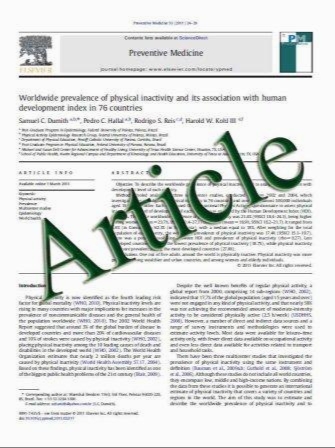An exploration of the associations of pregnancy and perinatal features with cytokines and tryptophan/kynurenine metabolism in children with attention-deficit hyperactivity disorder (ADHD
- نوع فایل : کتاب
- زبان : انگلیسی
- مؤلف : Robert D. Oades
- چاپ و سال / کشور: 2011
Description
Intra-individual variability of the characteristics of children with attention-deficit hyperactivity (ADHD) may reflect compromised glial energy supply in the synapse. We reported recently that while serum levels of a glial marker, the cytokine S100B, were not seriously altered, levels of other cytokines and tryptophan metabolites were related to symptoms, attention and variability. Here, we explore with a regression analysis whether levels of these substances were associated with features of the index pregnancy of potential aetiological significance. Serum was taken from 35 children with DSM-IV ADHD (14 on medication) and 21 typically developing controls to measure 8 cytokines (S100B, IL-2, IL-6, IL-10, IL-13, IL-16, TNF-a and IFN-c) and 5 metabolites (Tryptophan, Kynurenine, Kynurenate [KA], 3-hydroxy-kynurenine [3HK] and 5-hydroxyindole acetic acid [5-HIAA]). The mothers received a 124-item questionnaire on features surrounding the pregnancy. (1) For children with ADHD, a shorter pregnancy and smaller birth weight were associated statistically with increased 3HK and IFN-c and for obstetric problems with decreased TNF-a levels. (2) Maternal smoking related to decreasing kynurenine and increasing 3HK and S100B levels in ADHD children. Paternal smoking was associated with increased tryptophan in the controls and increased IL-6 levels in ADHD children. (3) The taking of supplements often related to decreasing TNF-a, increasing IL-10 and lower 5-HIAA levels in the ADHD children. Less 5-HIAA but more tryptophan was associated with earlier and later life events, respectively. (4) Increased IL-16 and 5-HIAA levels in the ADHD group related to reports of poorer infant health. Unexpectedly, more child care (seafood and time together) in ADHD than healthy families was implicated by lower tryptophan levels and an altered balance of pro-inflammatory cytokines. Across measures control families generally showed either non-significant associations or the opposite to those of the ADHD group. In ADHD children more than controls, the balance of potentially toxic or protective kynurenine metabolites and of pro- over anti-inflammatory cytokines may reflect the perinatal experience associated with stress, but not with maternal illness.
ADHD Atten Def Hyp Disord DOI 10.1007/s12402-011-0062-2 Received: 26 January 2011 / Accepted: 8 July 2011


